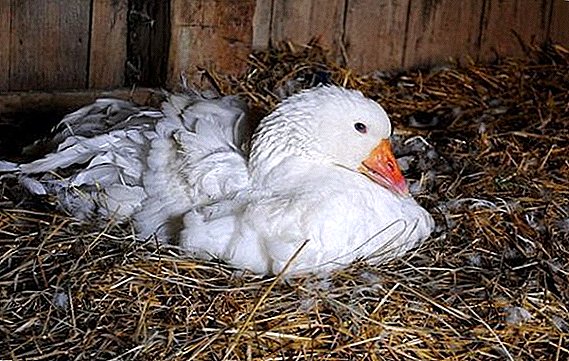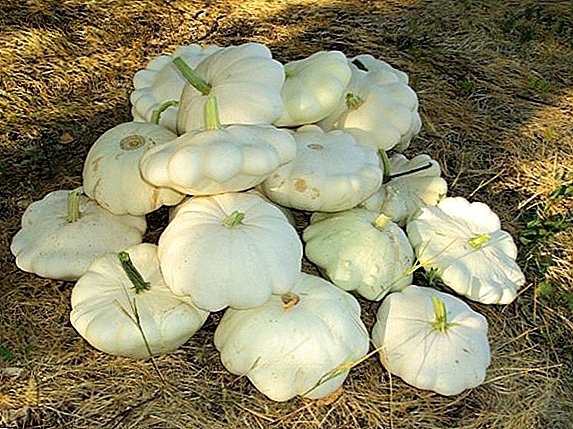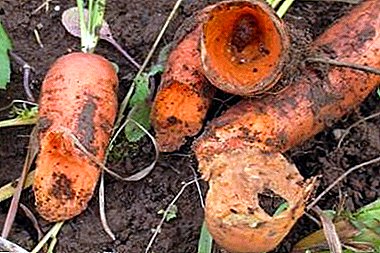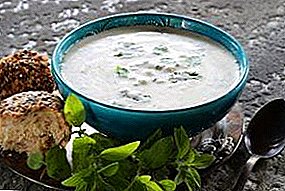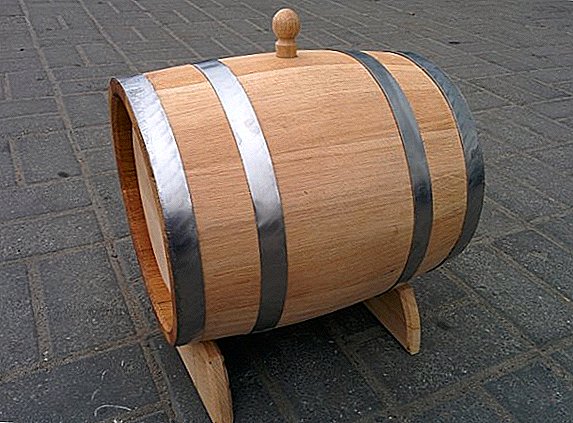 Tub for pickles or a barrel for wine - the necessary things on the farm, but they are rarely available, and if they do, the price is not the smallest. People with wood processing skills can make barrels on their own, having mastered the basics of cooperage. But this case is worth being taken by people who feel the tree with skillful hands, since the slightest blemish in the manufacture will make the product unusable. Consider what you need to know and have in order to make yourself a pot or a keg.
Tub for pickles or a barrel for wine - the necessary things on the farm, but they are rarely available, and if they do, the price is not the smallest. People with wood processing skills can make barrels on their own, having mastered the basics of cooperage. But this case is worth being taken by people who feel the tree with skillful hands, since the slightest blemish in the manufacture will make the product unusable. Consider what you need to know and have in order to make yourself a pot or a keg.
Basics of the cooperage
In order to master the work of the cooper, and make your first tub, you need not only the desire, but also the premises for work, the necessary materials and tools, devices.
If you have a cottage and you like to create, learn how to make beautiful garden swings, a brazier of stone, build a pool, make sculptures, build and equip a bathhouse, a waterfall, a fountain, gabions, a gazebo and rock arias.Cooperage products are made of specially prepared plates - rivets, tightly strapped hoops. The process of making such containers does not depend on the type of wood, but their use depends on it. Consider what wood coopers use and for which products:
- oak. The best ones are oak barrels. Their tannins improve the taste of wine and other alcoholic beverages, they are good for a variety of pickles. But they are not recommended to store honey - it will darken;
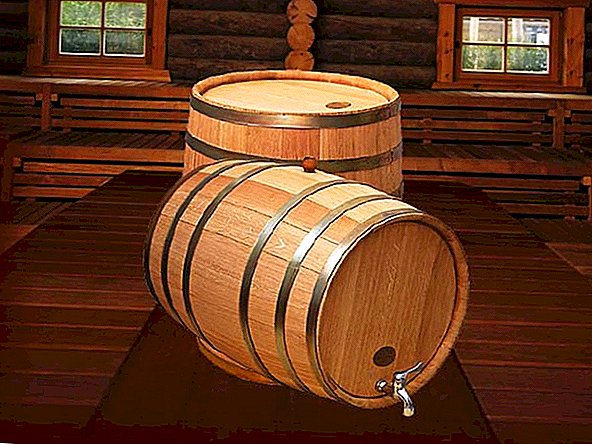
Reviews from the network of oak barrels


- Linden. The linden has no effect on the taste of the products stored in it, in such barrels you can store honey, pickle cabbage and cucumbers, keep candied berries and fruit. This wood also has antiseptic properties and better preserves food. It responds well to processing, almost does not warp, is resistant to loss of bulk, and is popular with coopers;
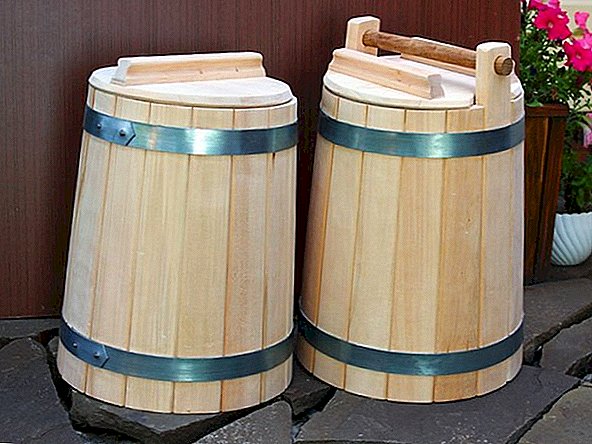
- aspen. Good for pickles - cabbage in aspen barrels is tasty and crispy. In the old housewives, aspen logs were thrown into barrels of other trees. Aspen's tendency to swell is greatly appreciated by the coopers, but it is not as strong as oak;
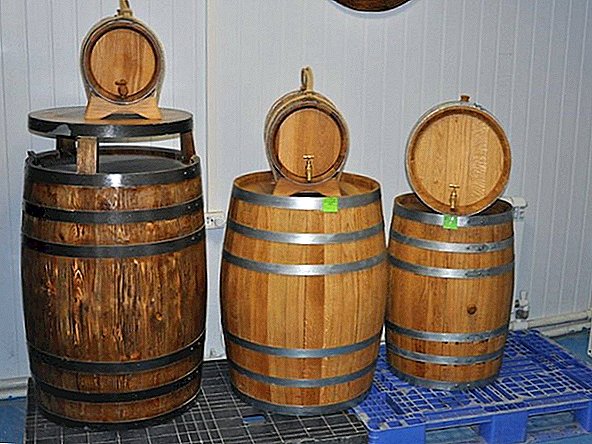
- ash. Hardness and properties similar to oak, it maintains some strong drinks (rum, grappa). In such a barrel products are stored for a long time;
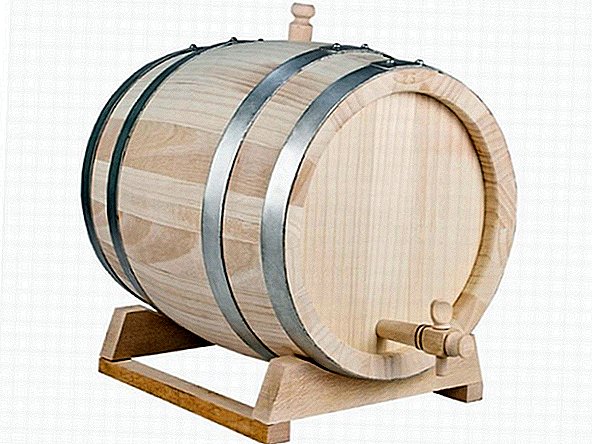
- beech. Less wear-resistant, but it looks beautiful, and as an alternative, it will do;
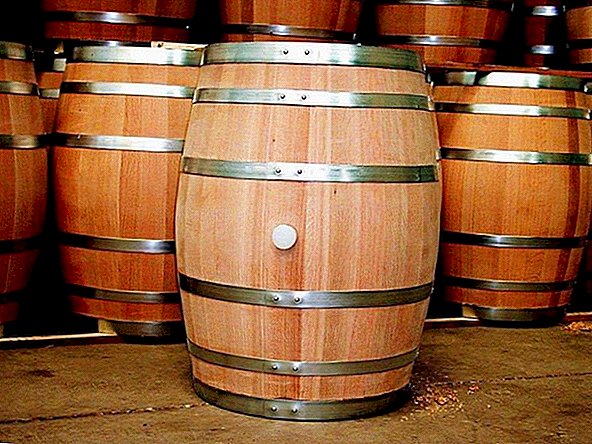
- coniferous trees (spruce, cedar, pine). They are soaked for a long time before use, because they release the resin, affecting the taste. But the soaking procedure does not always help. But they are great for bathing and bathing. Spruce barrels are suitable for salting mushrooms.
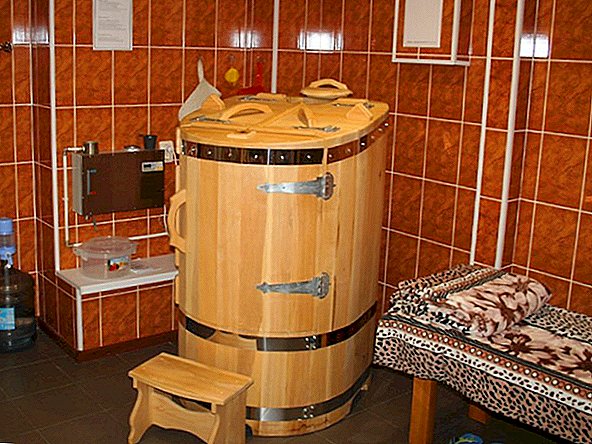
Important! If the rivets fit together not exactly exactly, then coopers use rogoz, which is called boar grass. This herb can fill all the cracks in the cooper's products, imparts tightness. It is also used in the repair.
Types of coopers and the corresponding types of rivets
All cooper-made dishes are made from special boards of small dimensions made of wood, which are called rivets. The size and configuration of such dishes depends directly on the size of these staves.
The following types of rivets correspond to different types of cooperage ware:
- parabolic. Such boards have a quadrangular shape with long sides that resemble curved curved lines. Of them make cooperage products, bulging on the sides - these are barrels and kegs of different sizes. These rivets are the most laborious;
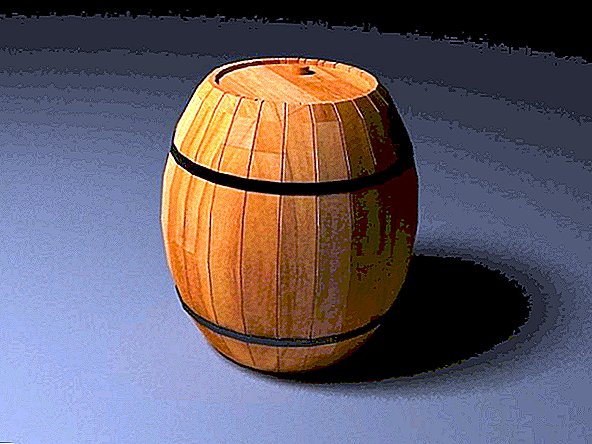
- straight lines. The basis of such capacity is a cylinder. Such cooperage products are easier to manufacture. The rivets are grooved plates in the form of a rectangle. These rivets are more laborious when combined with hoops of the same diameter. As the wooden planks dry out, the hoops lose their ability to hold them. Therefore, cooper vessels of cylindrical configuration are rarely made;
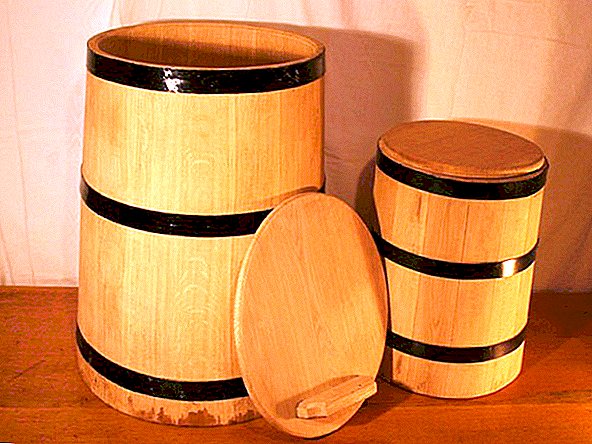
- conical. Straight grooved frets, formed in the form of an elongated trapezoid. They make dishes, resembling a truncated cone. Stretching the hoop over a wider part of such a product provides a strong tightening. This type of rivets is used in the manufacture of tubs, jans and tubs.
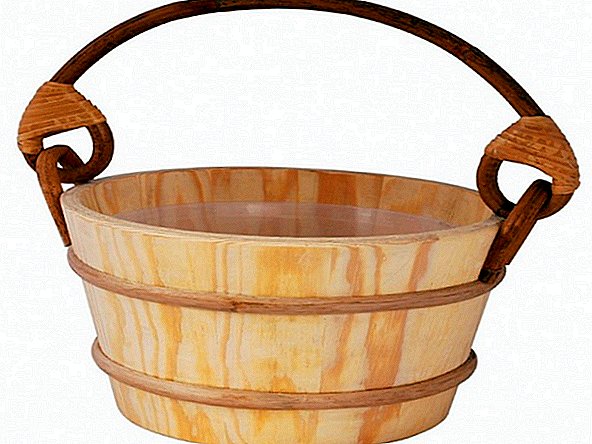
Learn how to make a path of cuts, of concrete.
What tools are needed
For the manufacture of wooden barrels with your own hands, you must purchase a certain list of tools and accessories:
- workbench for joinery;
- cooper jointer. You need to choose a longer one;
- circular humpback plane;
- devices for planing the edges of the boards;
- frame machine gate (for tightening rivets);
- chain tie;
- pillar gate;
- strug;
- scraper and scraper;
- patterns and patterns. Determine the shape and size of manufactured barrels;
- metal and wood clamps;
- the horn It is necessary for cutting the looping groove into which the bottom is inserted;
- heels of metal, wood or combined;
- tension for a hoop;
- braces for cooperage;
- planes and hatchets of different sizes.


Did you know? It is assumed that the barrels were invented by the Celts, although the ancient Greek historian Herodotus was still in the V century BC. er mentioned the palm tree barrels.For convenience, machines and workbenches are set to grow.
How to make a pickle tub
Starting to engage in cooperage products should be best with the tub, as the technology of its manufacture is more simple. Most popular tub sizes (bottom diameter / height / top diameter in mm):
- 280х300х260 with a capacity of 12 liters (bucket);
- 360x390x340 to 36 liters;
- 420x460x400 to 42 liters;
- 440x500x420 to 72 liters;
- 460x560x440 for 96 liters;
- 540x570x520 for 120 liters;
- 600x700x580 to 180 liters.

Dowels
It is best to make rivets from the bottom of old trees (klepochnika). Firewood will also be suitable. Raw wood is best suited for staves.
Important! Blanks can be stabbed or sawed. But real coopers only prick, because products made from sawn material are less durable, and microbes multiply more strongly in the porous structure of sawed products. Products in such tubs will be poorly stored. The fresher the wood, the easier it is to prick.

In the manufacture of rivets perform the following steps:
- The chock is chosen 5-6 cm longer than the height of the rivets. Then gently chop it with an ax in half. Each half, in turn, is pricked again in half, and so on until they receive a blank of the desired thickness. During such a peg, it is important to get into the core and it’s good if there are core rays that can be split. Since the core simply does not fall into the heart with an ax, it is placed on the end of the chocks in the right direction and hit from the top with a checkmaker (a large-sized wooden beater). Thin chocks are usually stabbed into eight parts (single row method). Of the thick chops, the rivets are harvested in two rows (two-row method). To do this, 1/8 of the prickly in half on the annual ring. From half of the smaller size, usually 1-2 blanks are produced, and from the most part 5-6 pieces are obtained.
- A wedge of wood on the side of the core and a bark with young wood are being stacked from the blanks - from the outer part of the blank. As a result of such a peg, the planks should be rectangular in cross section. The thickness of them should be 2.5-3 cm, and the width - 8-10 cm. For the plinth you need planks 15 cm wide.
- Billets should be well dried. Usually they have 3 months of summer or a month in a room with good ventilation.
- Make a pattern, given that the conicity (the ratio of the bottom to the top) at the coil is 1.08, but for greater decorative effect it is sometimes increased to 1.7-1.8. An old rivet from the barrel can also serve as a template. The number of rivets for a tub or barrel is calculated by the formula 3.14 * D / Ш, where D is the diameter of the bottom of the tub, and W is the width of the bottom of the riveting. Since the width of the rivets may differ slightly, it is easiest to calculate the bottom perimeter (3.14 * D) and try them on to a segment of the appropriate length.
- Make a markup on the plank.
- The edges are cut with an ax, and the outer surface is slightly rounded.
- Handle the outside on the cooper bench with a straight plow. If you have a carpentry workbench, you can use a plane. In this process, you need to constantly check with the template.
- They planted the inside of the rivets with a fillet. You can use the humpbacked scrap. The smaller the diameter of the product, the deeper the gutter.
- Stir with the ax the narrow edges of the plates, controlling the size of the template.
- Align the same edges with a jointer. The accuracy of the backing depends on how tightly the rivets will fit together.
To decorate your home, familiarize yourself with removing old paint from the walls, glueing different types of wallpaper, insulate window frames for the winter, install a light switch, a power outlet and install a flowing water heater.
 Dowels
DowelsMetal hoop making
Hoops can be made from metal sheet, but it is better to use hot-rolled steel strip 3 cm wide and 1.6 mm thick. Two hoops are made. The first, smaller, is made with the diameter of the upper part of the product, and the second must have a diameter equal to the base.
The following actions are performed:
- Calculate the perimeter (3.14 * D) in the place of installation of the metal wrap and add to it the doubled width (6-10 cm) of the band for overlap.
- Cut the calculated length of the strip and with a hammer bend it into a ring, making the required overlap.
- Make two holes with a diameter of 4-5 mm in the overlap area, install steel rivets in them. Nails can be used for rivets by burning them over a fire.
- One edge of the obtained steel hoop to flare with a sharp end of a hammer or forged on an iron stand (anvil). This is done to better fit the hoop to the product. After this treatment, the hoop section is no longer rectangular, but trapezoidal in shape. The hoop becomes a little tapered to match the product. The greater the slope of the tub, the greater the taper should have a hoop. At the same time more attention is paid to prokovke. For better prokovki can heat the hoop on the fire.
 Metal hoop making
Metal hoop makingDid you know? The best in the world market are French oak barrels. They are also made from Hungarian oak, which, by the way, has higher characteristics, but France uses its well-known wine-making name and in the manufacture of wine and cognac packaging.
Wreck assembly
Now we proceed to the assembly of the product in the following sequence:
- The skeleton of the future tub is made by attaching three supporting rivets to the smaller hoop at equal distance from each other.
- Insert between them other rivets, filling the entire structure. If the last plate is not included, it should be trimmed to the desired size. If it is smaller than necessary, then you should use a stock of plates for rivets and make a rivet of the desired size.
- With the help of a heel and a hammer, they hoop the hoop so that all the rivets close tightly with each other.
- Stretch on the resulting structure the bottom hoop, which has a larger size. Perform the previous operation for closing the elements.
- The resulting frame protrude. For this, the edges are marked with a surface gauge at risk in order to indicate the surplus to be removed. Then, at this risk, saw off all the excess with a saw.
- Inside the product, with a special bracket, scraping all the irregularities, paying particular attention to the joints between the rivets.
- The edges of the resulting product planed with a plane-humpback.
- From the inner sides, along the edges of straight plows, a chamfer is removed to prevent the ends from splitting and to facilitate the bottom insertion process.
- With the help of the dam, a special groove (chime) of about 3 mm is cut into the bottom from the inside, into which the bottom will be inserted. You can use the cutter.
 Wreck assembly
Wreck assemblyInstalling the roof on a new building is an important step that requires proper coordination of actions. Learn how to self-cover the roof with a metal tile, ondulin, to make a mansard and a gable roof.
Assembly and installation of the bottom
For the bottom (bottom) choose wider plates (up to 15 cm) in order to minimize the number of joints for reliability. In its manufacture the following actions are performed:
- Trim the edges of the blanks.
- Tightly rally the boards on the workbench.
- To find the required radius of the bottom, measure the compass legs in grooves (chimes) with the maximum place. Measure in the widest place in different directions several times.
- On the boards tightened on the workbench with a compass draw a measured bottom circumference, mark on it the location of the studs that will fasten the bottom rivets.
- To reach the boards from the grip and in the edge of the designated places, drill holes into which wooden or metal studs are driven into. They can be made of nails, hammering them with the sharp side, and flattening the side with the cap.
- Pin the studs with each other by studs and knock them tightly.
- Shield the resulting shield from the rivets on both sides and again outline the bottom circumference.
- Using an arboring circular saw, cut the bottom of the tub along the intended circle. In this case, sawing goes a little outside the circle, leaving space for subsequent treatments. You can use jigsaw.
- The resulting bottom is clamped on the cooper bench and straight chamfer on both sides, focusing on the size of the chime.
- Slit the bottom hoop to remove and loosen the bottom of the racks so that you can insert the bottom.
- Insert the bottom into a circular groove (chime) and re-tamp the hoop into place, tightening the rivets tightly together.
 Bottom assembly
Bottom assemblyBy the same principle make the lid and circle. The circle presses the vegetables and fruits in the tub, and the lid protects them from dust and dirt.
Important! Tubs of oak wood are soaked for a month, and of linden or aspen for about two weeks. Before laying the products for salting, the barrel for disinfection is doused with boiling water. Bookmark is done at the place of storage and under the cover. Empty tub to avoid drying, lubricated with vegetable oil. Любое бондарное изделие нельзя ставить на землю, нужно подставлять под дно что-либо (кирпичи, деревянный щит и прочее).Видео: как сделать кадку для солений
Как сделать бочку для вина
Вино в дубовой бочке улучшает свой вкус за счет дубильных веществ, находящихся в древесине дуба. А коньяк и прочие крепкие напитки приобретают красивый коньячный цвет. Такая бочка будет отличным приобретением для людей, увлеченных виноделием. Это изделие имеет два дна.
Заготовка клёпок
For making wine barrels for wine barrels, you should do the following:
- The blanks here are made in the same way as for the tub, but only from oak chocks with a diameter of at least 40-60 cm. And only the first 4 meters of the trunk are used from the oak.
- The shape of the rivets for barrels is more complicated: the inner part is thinner by the middle and thickens at the ends. The middle part itself is wider, but already at the ends. The taper of the bevel from the ends to the middle is, as in the tub, 1.08 (1.7-1.8). That is, if the rivet has a width of the middle part of 8.5 cm, then at the ends it will be 8.5 / 1.7 = 5 cm. The rivets are slightly concave inward and in the section have the appearance of a parabola. Therefore, you should make a template and a template (staples); with them you can control the curvature of the convexity of the outer side of the rivets, bevels on the sides of the edges, and the concavity of the middle. For a barrel of 50 liters they take a rivet 17 mm thick and from 40 to 90 mm wide.
- Initially, the dried billets are cut around the sides to give them a prismatic shape, making the tapered from the ends to the middle, and using a pattern to control.
- Mow the inner parts of the workpieces from the middle to the ends. The middle becomes 1/5 or 1/6 part. This will contribute to easier bending of the product.
- Remove the side chamfers with a check on the pattern.
- The outer part of the bracket planer plane. You can use the direct bracket for this operation.
- The inner side is treated completely humpback Scrap. You can use a plane-humpback.
- Make edging of edges.
 Dowels
DowelsMetal hoop making
For the barrel will need four hoops. Extreme hoops are called loops, central - pukovy, and intermediate - neck. In a wine barrel, they are most often packed from the bottom and from the top along the tilt and neck hoop.
The thickness and size of the material used depends on the volume of products. For a tub or barrel with a capacity of up to 25 liters, it is sufficient to use a steel tape of 3 cm and a thickness of 1.6 mm. For a barrel of 50 liters, material should be taken 3.5 cm wide and also 1.6 mm thick. For a barrel of 100 liters, a tape 4 cm wide and 1.8 mm thick is used for small hoops, and 4.5 cm for 4.5 liters. A barrel of 120 liters should already have a 5 cm wide hoop of the same thickness as the 100-liter . They are made the same way as for the tub.  We make a metal hoop
We make a metal hoop
Wreck assembly
To do this, the following operations:
- At first, the skeleton wagon is assembled in the same way as in the tub.
- Behind it is crammed the second, neck hoop.
- The lower part is steamed to increase flexibility. To do this, put the product rosette up well soaked with water, and inside install urn with chips, which is set on fire. This procedure takes about 30 minutes.
- The free butt end of the cooper collar is tightened and the wicker hoop is put on. Then - neck hoop. It is not recommended to hit the same place with a hammer a second time.
- Hardening and drying of the resulting skeleton is made by fire with the same urn with chips or a blowtorch. This procedure fixes the shape of the barrel and has a positive effect on the taste of wine materials. Boards with this procedure should be tanned, but in no way charred. Early burning can lead to the fragility of the product.
- The barrel is screwed (cut at the edges) and scraped inside with a scraper, just like a barrel.
- The chimes of the bottom and top are cut at a distance of 2.5 cm from the ends.
 Squeeze the bottom of the barrel
Squeeze the bottom of the barrelIf you have a country house, plot or cottage, be sure to install the fence. Read how to choose and install a brick fence, a metal or wooden fence made of a picket fence, a fence from a chain-link grid, a fence from gabions and a fence.
Assembly and installation of the bottom
For the manufacture of the bottom, the same steps are performed as for the tub. Only the barrel has two bottoms and, accordingly, no cover. They are tightly installed in their seats. In the upper bottom you need to make a hole for the bay (about 32 mm) and make a cork.  Making the bottom of the barrel is ready!
Making the bottom of the barrel is ready!
Maceration barrel
Before operating, the oak barrel should be soaked to get rid of excess tannins, which can affect taste too much. To do this, follow these steps:
- The product is filled with hot water (about 80 ° C).
- The barrel rotates in different directions so that all the internal wood is soaked with hot water.
- Water is drained.
- Cold water is poured to the top for a day.
- The water is replaced fresh and so repeated for two weeks.
Did you know? Many have heard that the famous philosopher of ancient Greece, Diogenes (approximately 400-325 BCE) lived in a barrel. But the ancient Greeks did not use cooperage, they kept wine in earthenware jars. The philosopher lived in a large earthen vessel - pithos. So the expression "the barrel of Diogenes" is the result of the conventionality of the translation of old manuscripts.Video: how to make a barrel for wine
Examples of creative ideas using barrels
Now ecostyle is in fashion, so the use of wooden barrels in the interior is very important. Often choose such cooperage products in the implementation of design ideas for the garden. So from the barrels you can make a mini-bar for alcoholic beverages. To do this, you can cut a side of the barrel and attach the handle on top.
From the wooden wine barrel you can make a table for the living room or veranda. For this purpose, it is cut into two equal parts and filled with hay or other materials suitable for design. From above place glass of a round form. Under the glass, you can decompose different items that fit the interior (cork, cones, shells, etc.). Instead of glass, you can take a tree. It will also look very stylish.  You can use this product as a floor pot for indoor plants, as well as for growing flowers in the garden. If you put the barrel on its side and place it on wooden supports, it can be used as a dog shed. She perfectly protects the watchdog from rain and cold.
You can use this product as a floor pot for indoor plants, as well as for growing flowers in the garden. If you put the barrel on its side and place it on wooden supports, it can be used as a dog shed. She perfectly protects the watchdog from rain and cold.
You can make an unusual sink. To do this, select the appropriate sink and place it on top of this cooper piece. It will look good if the bathroom or kitchen is made of wood or materials that imitate it. If the barrel is cut into pieces (about 15-20 cm) and placed on the wall, and inside is placed wooden partitions, you get an interesting organizer for storing various items. 
Musicians can transform a barrel into a stylish drum by pulling the matching material. If you cut a side of the barrel and hang it on the ropes by the edges, you get a cute cradle for the baby. Wooden products can also be converted into garden furniture - a table, armchairs, chairs and more.
If you decide to engage in the cooperage business, you can provide yourself with necessary and beautiful household items that can be used for different purposes (for pickles, wine, decor). This business can become a profitable business, but it is rather difficult and should be started by a person who has certain skills in working with wood.











